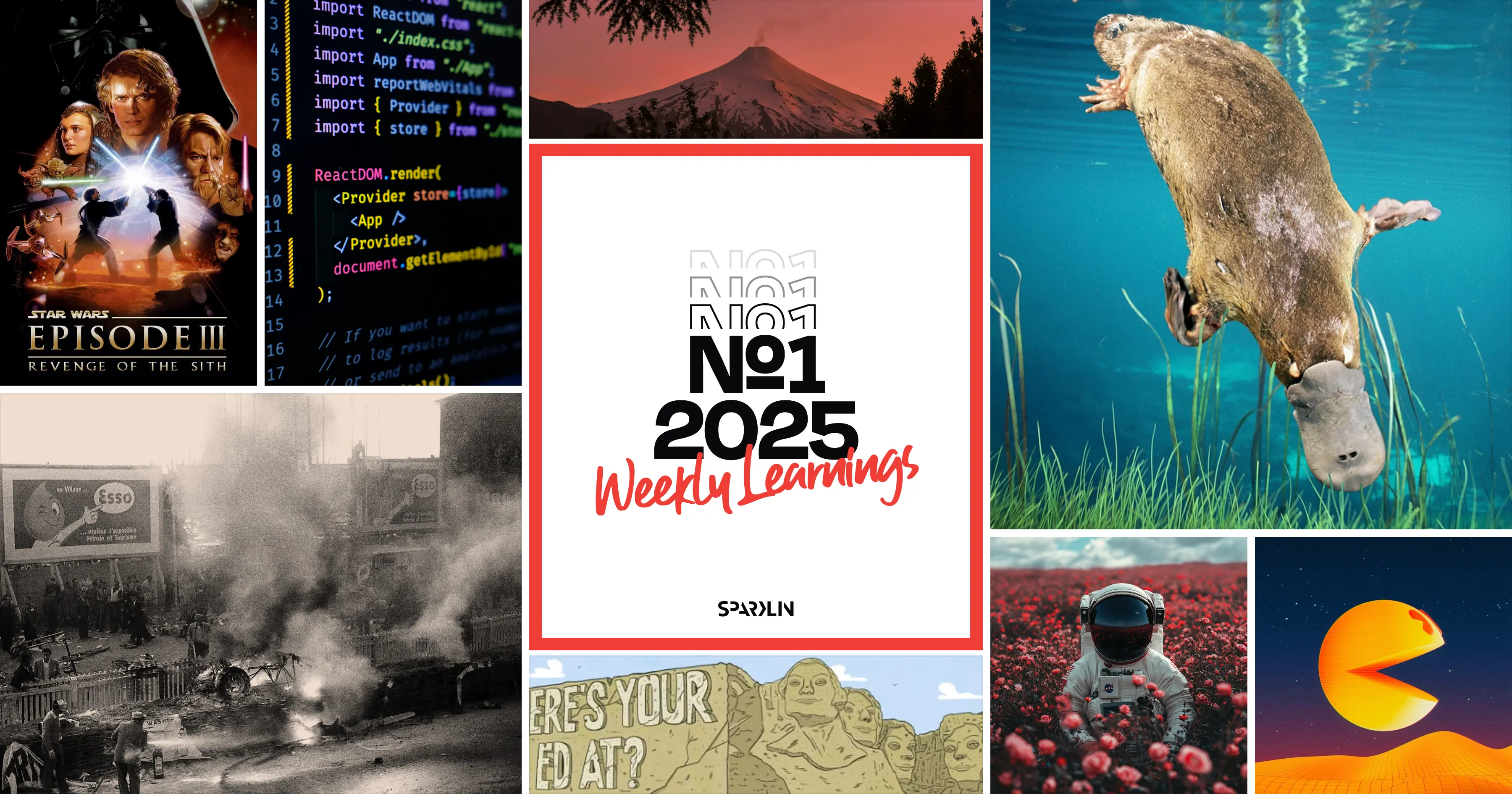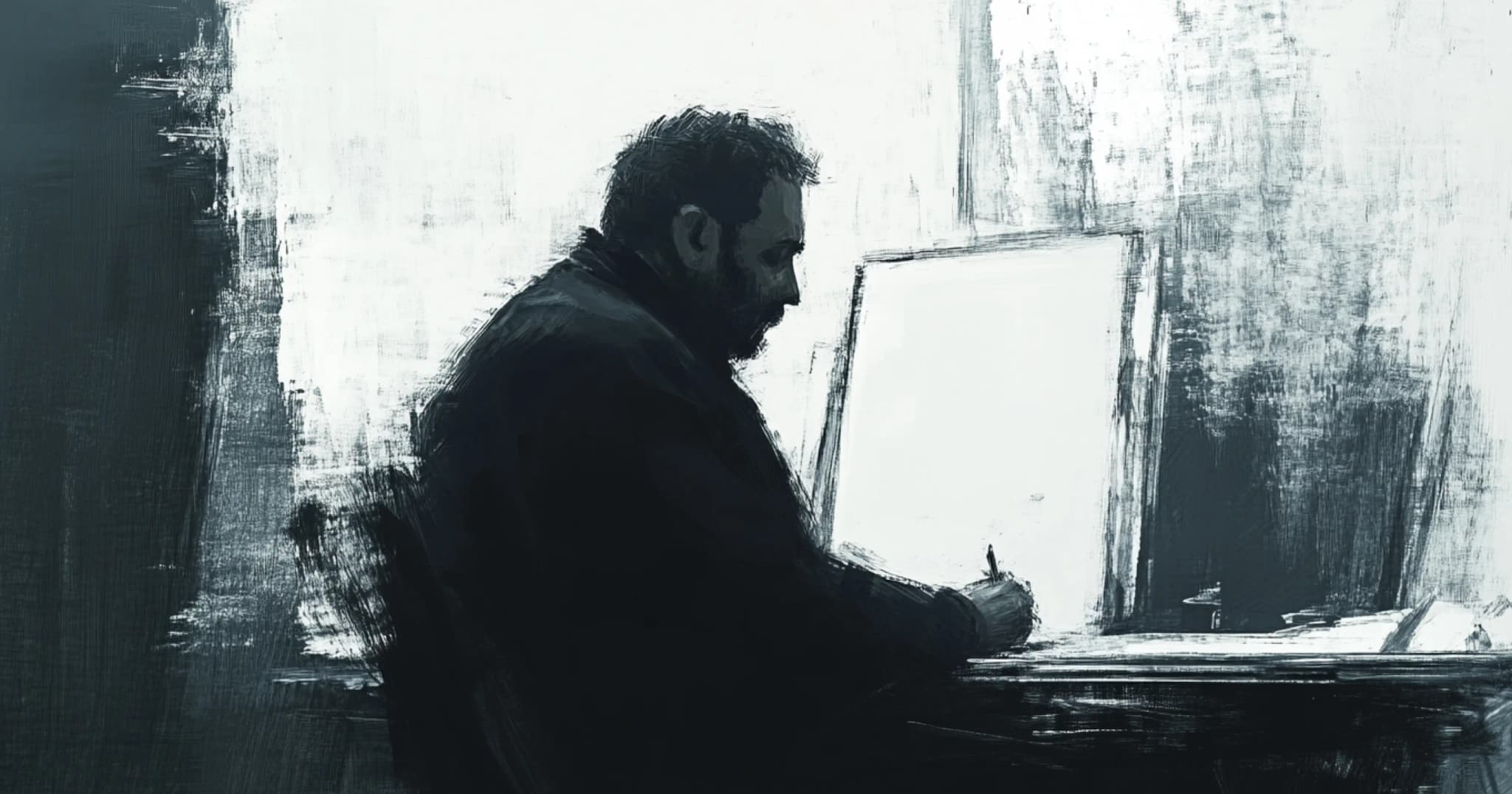We’re kicking off 2025 with our first chapter of Weekly Learnings. Be seated for some of the most fascinating nuggets of wisdom that we’ve stumbled upon recently.
Did you know the platypus defies all logic as an animal? Or a race deadlier than Le Mans? We also came across a new buzzword, the ‘Rot Economy’. Believe it or not, we found out you can rent a volcano. And, so much more. Let’s dive in!
Quote of the week
"Only a sith deals in absolutes."
— Obi-Wan Kenobi Star Wars: Episode III - Revenge of the Sith
1. The Rot Economy
Sneha found a new word that’s trending: "The Rot Economy." As described by Ed Zitron, it is the outcome of investors, particularly venture capital firms, pouring money into the tech market in search of unrealistic, infinite growth. As a result, businesses are shifting away from traditional models and operating more like marketing firms focused on extracting more funds from investors.
Zitron also relates this to Cory Doctorow's infamous ‘enshittification’ theory, which explains why all products and services nowadays are in a perpetual state of decline. Online platforms start by offering great services to attract users but later reduce quality to boost profits for shareholders.
Read more here: Ed Zitron's Where's Your Ed At.
2. The illogical Platypus
According to Shivani, the platypus is possibly the weirdest animal on the planet.
- It's a mammal that lays eggs.
- It is duck-billed, beaver-tailed, otter-footed, and venomous.
- It has electroreceptors for locating prey, eyes with double cones, no stomach, and 26 pairs of chromosomes.
- It's fluorescent and glows under UV light.
3. The future of UI Libraries: Base UI
Radix, the basis of shadcn/UI, would seem to be the end-all solution for primitive accessible components. Still, when the creators of Radix, Floating UI, and Material UI come together to form a new UI library (Base UI), we should pay extra attention.
4. Food for thought:
Sakshi learned to make a killer Alfredo Pasta and also gave us food for thought this week:
5. The true test of human endurance by Le Mans
Mohit learned about the world’s oldest and most prestigious endurance car race: the 24 Hours of Le Mans. This legendary race aims to cover the maximum distance in 24 hours, and tragically, many lives have been lost over its history, especially among spectators.
But other races surpass Le Mans when it comes to driver fatalities. The Indianapolis 500 leads the chart for the most driver deaths in motorsport. (You can explore more here: List of driver deaths in motorsport)
Interestingly, that list doesn’t include motorcycle races. This led Mohit to discover the Isle of Man TT — the most fatal race in the world. Since 1937, only two years have been "deathless": 1982 and 2024.
The worst year on record was 2005, with a staggering 10 fatalities.
6. The possibility of renting a Volcano
Mayank researched about El Salvador's intriguing plan to potentially “rent a volcano” to mine Bitcoin using volcanic energy.
Even more fascinating, he discovered that El Salvador is the only country in the world to officially adopt Bitcoin as a legal currency, allowing people to use it for everyday transactions.
7. The unexpected horror in Pac-Man
"Even in the most familiar and lighthearted spaces, there’s room for mystery and depth."
Ishant stumbled upon an article that turned the lighthearted world of Pac-Man into something chilling.
The article explored how the simple arcade game, known for its fun and quirky vibes, could be reimagined as a horror story. It painted Pac-Man’s endless maze as a sinister trap and the ghosts as relentless hunters, giving the game an unexpected depth.
Ishant’s take: Even the most familiar things can hold hidden layers of meaning. Whether it’s a project at work or a hobby, try looking at it from a completely different angle — you might discover something extraordinary.
Read the article on Screen Rant.
8. The all-new React 19
Piyush shared an interesting update about the release of React 19. This version focuses on empowering developers with simpler, more intuitive tools. Key highlights include:
- Server Components 2.0: Enhanced architecture for better server-rendered app performance.
- New Hooks: Introduction of hooks like useResource to handle async operations seamlessly.
- Performance Improvements: Optimized rendering pipelines and faster hydration times.
- Concurrent Features: Improved support for concurrent rendering in complex apps.
- Streaming Enhancements: Better streaming capabilities for server-rendered content.
- Ecosystem Updates: Updates to dev tools and libraries for a smoother developer experience.
9. The reflections of a designer
Shreshtha shared her insights from the book Creative Confidence and posed a thought-provoking question:
Does an abundance mentality help us go from a blank page to meaningful insights?
She noted how scarcity can make us cling to limited ideas, often stifling creativity. In contrast, embracing abundance allows ideas to flow freely, blending and evolving without the fear of losing ownership. Even simple experiences, like a morning walk immersed in nature, can remind us of life’s inherent abundance.
Shreshtha’s take: Cultivating an abundance mindset is not about ignoring challenges but reframing how we see the world. By recognizing the opportunities around us and believing in the limitless potential of love, success, and joy, we can unlock creativity and achieve more meaningful outcomes.
10. The battle of Elasticsearch vs. Vector Databases
Rohit explored the key differences between Elasticsearch and vector databases. While Elasticsearch shines at full-text search and analytics, it struggles with high-dimensional vector searches needed for AI applications, like recommendation systems.
Enter vector databases—built specifically to handle vector embeddings and perform similarity searches efficiently. They cater to modern data challenges, enabling AI-driven tasks such as personalization, image recognition, and natural language understanding.
11. The Travel Bug:
- The Japanese language historically had one word for blue and green (ao), so traffic lights in Japan often appear blue to honor linguistic tradition, even though they’re technically green.
- In the Arctic town of Longyearbyen (Norway), people leave car doors unlocked in case others need emergency shelter from polar bears.
- Also, bodies can’t be buried in this Norwegian town because permafrost preserves them too well and they fear that if any day the ice were to dissolve, it would lead to catastrophic illnesses from the corpses.

That’s a wrap on Weekly Learnings this week ✨
We’ll keep learning, keep growing, and perhaps make the coming week even better. Got thoughts, questions, or insights of your own to share? We’d love to hear them—drop us a hello at hello@sparklin.com and join the conversation.



